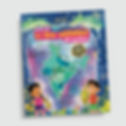Life Story and Contributions of Maharishi Sushruta: Author of Sushruta Samhita
- Yashika Dubey
- Jun 29
- 4 min read
Updated: Jul 9
Maharishi Sushruta: The Father of Surgery and His Enduring Legacy
Maharishi Sushruta is one of the most remarkable figures in the history of medicine. He lived in ancient India and is remembered not only as a great healer but also as a pioneer of surgery. His influence is still felt today. He is often referred to as the “Father of Surgery” in India.
Origin Story of Maharishi Sushruta
According to ancient Indian texts, medical knowledge was considered a divine gift. These texts mention that God Indra taught medicine to Sage Dhanvantari. Dhanvantari incarnated as King Divodasa of Kashi (Varanasi). Divodasa, in turn, passed this sacred knowledge to his student, Sushruta. As a result, Maharishi Sushruta belonged to a respected lineage of sages and scholars who learned medicine from Divodasa Dhanvantari.
Some texts suggest that he was the son of Rishi Vishvamitra; however, accurate details about his immediate family or parents are not available in historical records. Recently discovered ancient manuscripts suggest that Rishi Sushruta might have written his greatest work between 200 BCE and 400 CE. He is believed to have lived and practiced medicine near Varanasi, which was already a great center for medical studies during that time.
Scholarly Contributions: Sushruta Samhita
The Sushruta Samhita is an ancient Indian medical book written by Maharishi Sushruta. Though composed over 2500 years ago, it contains detailed instructions on surgery and medicine.
How Big Was This Book?
The Sushruta Samhita comprises 184 chapters. This extensive work lists more than 300 surgical procedures. It describes over 120 surgical instruments and provides details on various types of wounds, fractures, dislocations, conditions, and their treatments. Furthermore, the text includes descriptions of over 100 medicinal plants, detailing their taste, usage, and effects. It remains one of the most important contributions to both Ayurveda and the early history of medical science.
A Book Created Over Centuries
The Sushruta Samhita has evolved over the centuries and is divided into two main parts today: the Purva-Tantra and the Uttara-Tantra. The Purva-Tantra has five main sections: Sutra Sthana, Nidana Sthana, Sharira Sthana, Chikitsa Sthana, and Kalpa Sthana, spanning 120 chapters in total. The Uttara-Tantra, the final section of the Sushruta Samhita, contains Shalakya Tantra, which deals with diseases of the eyes, ears, nose, and head, as well as sections on Kaumarabhritya (children’s health), Agada Tantra (about poisons), and Bhuta Vidya (mental diseases). It also includes Aupadravika, a section describing complications from surgical procedures.
How Were Ancient Doctors Trained?
The Sushruta Samhita emphasizes the importance of hands-on training for students of surgery. It outlines a structured approach to surgical education, including anatomical dissection and repeated practice. This method is akin to modern medical education.
Sushruta taught his students surgical skills using experimental models made from organic materials. They practiced incisions on soft fruits and vegetables to build their precision. Students trained under him for many years before performing actual surgeries.
Surgical Techniques of Yore
Sushruta categorized surgery into eight types:
Chedya (excision)
Bhedya (incision)
Lekhya (scarification)
Vedhya (puncturing)
Eshya (probing/exploration)
Aharana (extraction)
Vishravana (drainage/evacuation)
Sivana (suturing)

The Sushruta Samhita emphasizes core surgical principles such as careful planning, precision, hemostasis (stopping blood loss), and maintaining a clean technique. To reduce pain during surgical procedures, Sushruta used natural anesthetics. These included wine and cannabis-like substances.
Sushruta also described reconstructive surgeries in detail. Plastic or reconstructive surgery involves fixing or improving body parts to enhance their function or appearance after injury or illness. Notable procedures he described include Nasa Sandhana (rhinoplasty - nose reconstruction), Oshtha Sandhana (lip repair), and Karna Sandhana (ear reconstruction).
Legacy and Recognition of Maharishi Sushruta
Maharishi Sushruta’s detailed accounts of rhinoplasty, which can be found in the Sushruta Samhita (Sutra Sthana, Chapter 16, and Chikitsa Sthana, Chapter 26), are considered the earliest known written records of plastic or reconstructive surgery. His methods, particularly the "Indian flap" technique, are still referenced in modern plastic surgery. He is widely celebrated as the “Father of Plastic Surgery.”
One of the early English translations of the Sushruta Samhita was undertaken by Kaviraj Kunjalal of Calcutta in 1907. A palm-leaf manuscript of the text is preserved at the Los Angeles County Museum of Art in the United States. In 2018, the Royal Australasian College of Surgeons honored Maharishi Sushruta by erecting a statue of him on their campus in Australia.
The “Sushruta Project” is an ongoing initiative by experts aimed at studying the Sushruta Samhita and its historical significance. A major discovery from this project is a palm-leaf manuscript dated to 878 CE. This finding is nearly a thousand years older than previously known copies. It has helped scholars better understand Sushruta’s work and its significance in the history of medicine. Maharishi Sushruta’s life and work exemplify the depth of scientific thinking in ancient India. His legacy continues to inspire medical and surgical students around the globe.
In conclusion, the lasting impact of Maharishi Sushruta and the Sushruta Samhita on modern medicine is undeniable. His contributions, both in surgical techniques and medical education, laid the foundation for centuries of medical practices. His work stands as a legacy of wisdom that continues to enlighten and guide the medical professionals of today.








